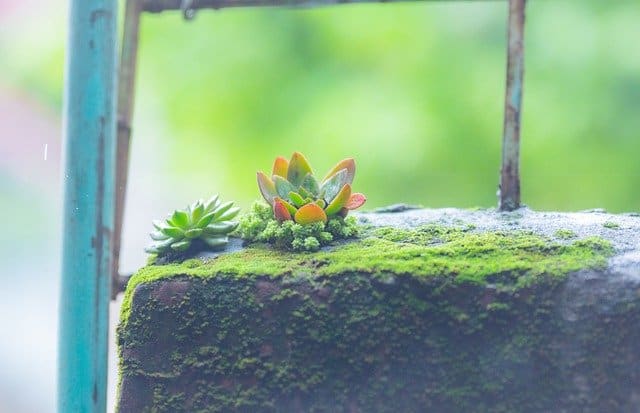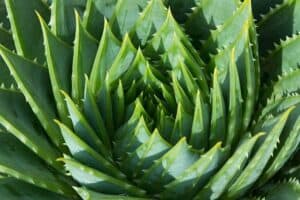
The radiation we are exposed to daily from our cellphones, TVs, and Wi-Fi has been linked to many serious health risks such as cancer and neurological conditions.
Research shows that plants have anti-radiation properties, making them perfect allies in our fight against the adverse effects of EMFs. Another bonus is that most anti-radiation plants are indoor plants.
An abundance of evidence suggests the EMF (electromagnetic field) coming from these devices can cause long-term damage to your cells. However, plants are a great addition to absorb the EMF radiation, minimizing our exposure.
Keep reading if you are curious about the different effects plants have on EMF radiation.
Wave Nature Of Radiation
When you touch the surface of a pond, you can see ripples moving away. When we yank on a tight rope held at one end, we can see a form moving along the string.
All these are examples of waves.
Electromagnetic spectrum
An electromagnetic spectrum is a group of waves traveling at a speed of 30,000,000m per second. All the components of the electromagnetic spectrum give out energy and can travel in space.
The names of these components are:
- radio waves
- microwaves
- infrared
- visible light
- ultraviolet
- X-rays
- gamma rays
The range of waves above, from radio waves to gamma rays, carry energy. According to physics, the shorter the wavelength, the higher is the energy associated.
Hence radio waves pose a lesser risk than gamma rays; gamma rays are known to cause cancer due to their high energy content.
Ultraviolet, X-rays and gamma rays are also known as ionizing radiations: they knock off DNA in the cells and cause cell mutations, further aggravating cancer.
Radiation
When we speak about radiation, we talk about the energy content or energy conveyed from each wave. Gamma rays have more energy associated with a single wave than a single wave of radio.
However, energy alone is an incomplete description when analyzing radiation. The term intensity is also used.
An analogy is the intensity of light perceived from a lighthouse. The closer you are to the lighthouse, the more dazzled you are.
Effects of plants on radiation
From radio to gamma rays, plants can either absorb EMF radiation or reduce its intensity. It must be noted that while all those components are emitted by the Sun, the harmful ones, such as gamma rays and X-rays, are blocked by Earth’s magnetic field and the Earth’s ozone layer.
The central part of the plants which fend these radiations is the leaves. The leaves can be large or small, but they cover an area.
This same area captures light from the Sun and converts radiation partly into heat and partly into starch via a complex plant process called photosynthesis.
Most radiation falling on a plant is converted into heat energy (infra-red waves). Many papers have been published on the effect of electromagnetic waves on plants.
For instance, a study made by Alain Vian, Michel Gendraud, and Pierre Bonnet in 2016 has established that plants do respond to high-frequency electromagnetic waves, namely X-rays and gamma rays.
What are the best plants that shield from Electromagnetic Radiation?
1. Cactus

Cactus is often quoted as one of the best plants which can shield electromagnetic radiation.
Most cactuses have evolved in harsh environments and, as such, have optimized their leaves for efficient capture of sunlight and electromagnetic waves in this neighborhood.
Their simple presence in a room will do the job.
2. Snake plant

Snake plant is particularly good at using light energy (a component of the electromagnetic spectrum) and converting it into starch by photosynthesis.
The snake plant can also embellish the room; the’ long and thin appearance of the leaves on a snake plant provides aesthetic enhancement when used on your interior décor.
Additionally, it requires minimal maintenance. The snake plant is best placed somewhere that is not directly in contact with sunlight.
For maximum results in absorbing radiation, place it near your computer, Wi-Fi device, or other electronics that emit radiation.
It is a great way to keep your room and home healthy!
3. Stone Lotus Flower

Despite its size, this plant has excellent radiation-absorbing properties. Besides, it is small and can easily be placed on a desk.
Aside from being effective in protecting against radiation, the stone lotus flower requires low maintenance. It needs extraordinarily little light and water to be able to survive.
You can also plant it in stones to hold its moisture for up to 2-3 days. If you need to buy one for your home, you can get them at an affordable price.
4. Aloe Vera

Aloe Vera is a wonder plant that offers many positive effects on humans. Firstly, it can absorb light and decrease the exposure of radiation to a person.
And then, aloe vera can clean the ambient air by removing carbon dioxide and releasing oxygen. The leaves of aloe vera also have therapeutic applications.
Other blockers of electromagnetic radiation
While plants do offer attractive natural protection against radiation, there are commercial alternatives. Several companies have created technologically advanced products called EMF blockers to protect people against radiation.
One of the companies is Defendershield. Renowned for its broad spectrum of EMF blockers, all products are guaranteed to protect you from up to 99% of EMF radiation.
You will find products that suit your preferences and lifestyle, from phone cases, laptop cases to wearable EMF blockers, like gloves, beanies, and blankets.
The best approach to protecting you and your family from the constant EMF radiation is combining EMF-blocking plants and EMF blockers for multi-layered protection.
Besides, the products are also beneficial for people suffering from Electromagnetic Hypersensitivity (EHS) and can be applied in their daily lifestyle.
Conclusion
Plants offer a natural way of shielding people from radiation. Several research papers back up the claim that plants absorb EMF radiation for photosynthesis.
However, we cannot accurately measure how much EMF radiation plants absorb and how much is left in the surrounding.
Therefore, for maximum protection, you can combine both plants and EMF blockers in your lifestyle.


